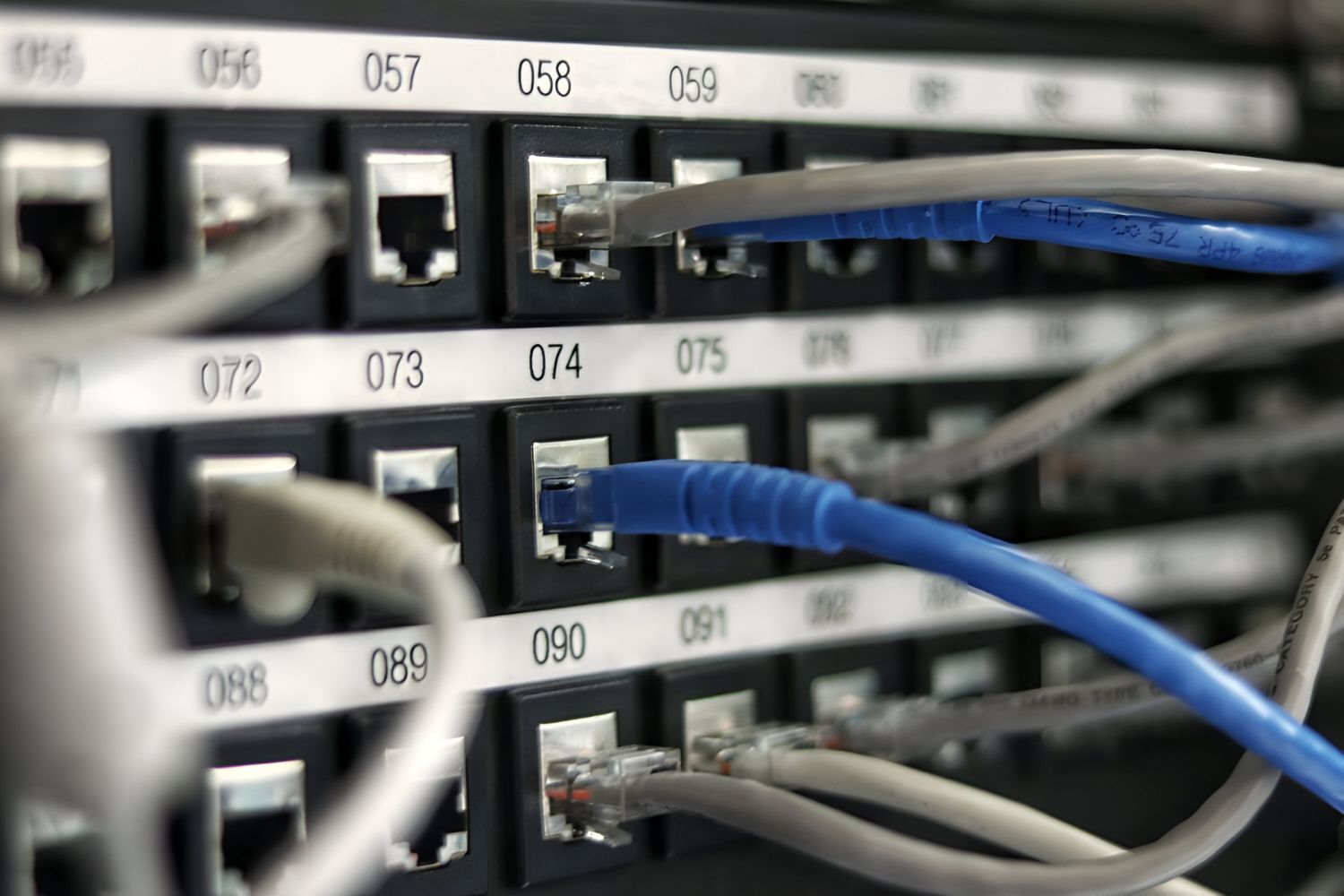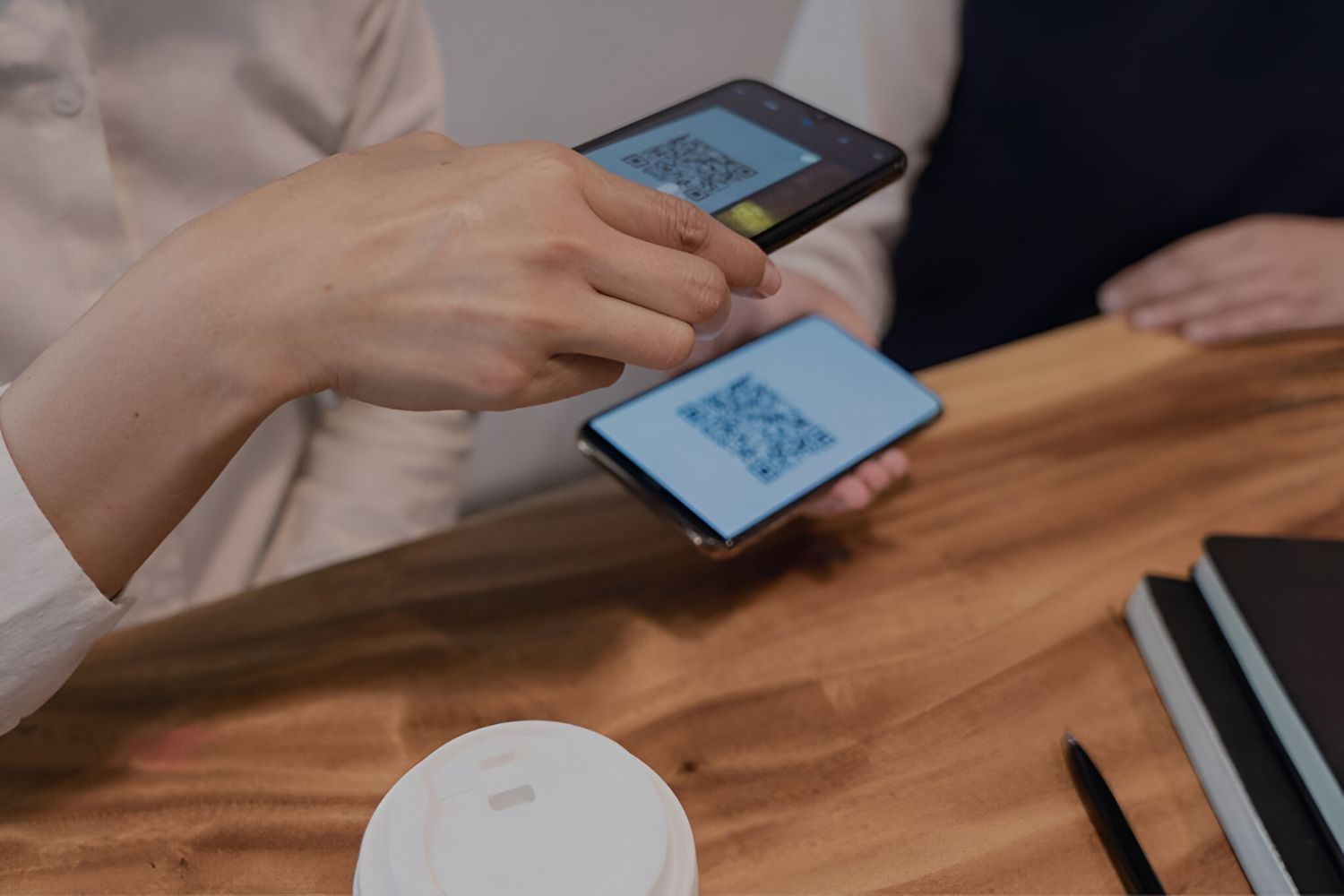Introduction
Peer-to-peer (P2P) file sharing has become increasingly popular for sharing files with others around the world. It allows users to directly connect and exchange files without the need for a centralized server. While P2P file sharing offers convenience and accessibility, it also poses significant risks when it comes to malware transmission.
Malware, short for malicious software, refers to any software designed with malicious intent to damage or exploit computer systems. P2P file sharing networks can serve as breeding grounds for various types of malware, as they provide an open environment where files can be freely exchanged between users. It is crucial to understand the different types of malware that can be transported through P2P file sharing in order to protect your computer and personal information.
Throughout this article, we will explore some of the most common types of malware that can be transmitted through P2P file sharing networks. By gaining a better understanding of these threats, you can take the necessary precautions to safeguard your computer and data.
Worms
One type of malware commonly spread through P2P file sharing is worms. Worms are self-replicating programs that are designed to spread rapidly across computer networks. They exploit security vulnerabilities to infect other systems and can cause significant damage.
When a user downloads a P2P file infected with a worm, the malware can quickly spread to other connected devices. Worms often use various communication protocols, such as email or instant messaging, to send copies of themselves to other users within the P2P network. This enables them to propagate and infect a large number of devices in a short period of time.
Once a worm infects a computer, it can perform a range of malicious activities. It may create backdoors, allowing remote access to the infected system, or it may launch DDoS (Distributed Denial of Service) attacks, overwhelming a targeted website or server with a flood of traffic. Some worms can also steal sensitive information, such as login credentials or banking details.
To prevent the spread of worms through P2P file sharing, it is essential to maintain up-to-date antivirus software and regularly scan downloaded files. Additionally, exercise caution when downloading files from unknown sources and be wary of suspicious file extensions or unexpected file sizes.
Trojans
Trojans, named after the famous mythological horse, are a type of malware disguised as legitimate software. They are often spread through P2P file sharing networks, enticing users to download and install them unknowingly. Once inside a system, trojans can perform a variety of malicious activities without the user’s knowledge.
Unlike worms, trojans do not have the ability to self-replicate. Instead, they rely on social engineering techniques to trick users into executing them. Trojans may masquerade as popular software, games, or utilities, luring users into downloading and opening them. Individuals who unknowingly install trojans provide an entry point for hackers to gain unauthorized access to their systems.
Once a trojan infects a system, it can perform various malicious actions. It may create a backdoor, granting the attacker remote control over the compromised computer. Trojans can also steal sensitive information, such as passwords, credit card details, or personal files. Some trojans are designed to download additional malware or participate in botnet activities.
To protect against trojans in P2P file sharing networks, it is crucial to exercise caution when downloading and installing software from untrusted sources. Always verify the legitimacy of the files and use reputable antivirus software to scan downloaded files before opening them. Additionally, keeping your operating system and software up to date with the latest security patches can help mitigate the risk of trojan infections.
Rootkits
Rootkits are a malicious form of software designed to gain unauthorized access to a computer system and remain hidden from detection. They are often spread through P2P file sharing networks, taking advantage of unsuspecting users who download infected files.
Rootkits are particularly dangerous because they operate at the highest privilege level, known as “root” or “administrator” access, giving them complete control over the compromised system. They can modify system files, registry settings, and even intercept system calls to conceal their presence and activities.
Once a rootkit gains access to a system, it can enable other types of malware to be installed, such as keyloggers or spyware, further compromising the user’s privacy and security. Rootkits can also allow remote attackers to gain control of the infected system, making it a part of a botnet or using it for other malicious purposes.
Detecting and removing rootkits from a compromised system can be challenging. Traditional antivirus software may struggle to identify and eradicate rootkits due to their sophisticated hiding techniques. Specialized anti-rootkit tools are often required to effectively eliminate these stealthy malware.
To avoid falling victim to rootkits through P2P file sharing networks, it is crucial to use reputable sources and exercise caution when downloading files. Regularly scanning your system with anti-malware software, including anti-rootkit capabilities, can help detect any potential infections and mitigate the risks associated with rootkits.
Spyware
Spyware is a type of malware often distributed through P2P file sharing networks that secretly gathers information about a user’s activities without their consent. This includes personal data, browsing habits, keystrokes, and even sensitive information such as login credentials and financial details.
Spyware is typically bundled with seemingly harmless software or advertised as useful tools, enticing users to install them. Once installed, spyware operates silently in the background, collecting and transmitting data to remote servers. This stolen data can then be used for malicious purposes, such as identity theft, unauthorized access to financial accounts, or targeted advertising.
In addition to collecting information, spyware can also degrade system performance, slow down internet speeds, and cause frequent crashes. It can modify browser settings, redirect internet searches, and display unwanted pop-up advertisements. Some advanced forms of spyware can even take control of a user’s webcam or microphone, compromising their privacy.
Preventing spyware infections requires a combination of caution and proactive measures. Only download files from trusted sources and review user reviews and ratings before installing any software. Regularly update your operating system and applications with the latest security patches to minimize vulnerabilities. It is also vital to have robust antivirus software that includes spyware detection and removal tools.
If you suspect a spyware infection on your system, run a full system scan with your antivirus software and consider using specialized anti-spyware tools to detect and remove any traces of spyware.
Adware
Adware, short for advertising-supported software, is a type of malware commonly distributed through P2P file sharing networks. Adware is designed to display unwanted advertisements to users, often in the form of pop-ups, banners, or injected ads within web browsers or other software.
Adware often disguises itself as legitimate software or gets bundled with freeware or shareware programs. When users download and install these applications, the adware is installed alongside, without their knowledge or explicit consent. Once installed, it tracks the user’s online activities and displays targeted advertisements based on the collected data.
While adware may seem less harmful compared to other types of malware, it can be quite intrusive and disruptive. It can slow down system performance, consume bandwidth, and affect the overall user experience. In some cases, adware may even lead to security issues by exposing users to malicious links or deceptive advertising.
To protect against adware in P2P file sharing networks, it is essential to carefully review the software being downloaded and installed. Read user reviews and verify the legitimacy of the source before proceeding. Additionally, consider using reputable ad-blocking software or browser extensions to block unwanted ads and minimize the risk of adware infections.
If you suspect adware on your system, perform a thorough scan using antivirus software to detect and remove any adware components. Regularly update your antivirus software to ensure it has the latest definitions to combat new variations of adware.
Ransomware
Ransomware is a highly damaging form of malware that is frequently distributed through P2P file sharing networks. It is designed to encrypt a user’s files, rendering them inaccessible until a ransom is paid to the attacker. Ransomware attacks have become increasingly common and can have devastating consequences for both individuals and businesses.
When a user unknowingly downloads and executes a ransomware-infected file, the malware starts encrypting important files on the victim’s computer or network. Once the encryption process is complete, the user is presented with a ransom note demanding a payment, usually in cryptocurrency, in exchange for the decryption key.
Ransomware attacks can result in the loss of valuable data, causing significant financial and emotional distress. In some cases, even paying the ransom does not guarantee that the decryption key will be provided, leaving victims stranded with encrypted files.
Preventing ransomware infections is crucial for maintaining the security of your files. To reduce the risk of ransomware through P2P file sharing networks, be vigilant when downloading files from unknown sources. Regularly back up your important data to an external source or cloud storage, ensuring that backups are not directly accessible from the infected device.
It is vital to keep your operating system and security software up to date with the latest patches and definitions. Additionally, exercise caution when opening email attachments or clicking on suspicious links, as ransomware can also be distributed through phishing emails.
In the unfortunate event of a ransomware infection, it is crucial to avoid paying the ransom, as it encourages further criminal activities. Instead, seek assistance from cybersecurity professionals who may be able to provide guidance on potential decryption methods or help restore your data.
Botnets
Botnets are networks of infected computers, often spread through P2P file sharing networks, that are controlled by a central command and control (C&C) server. Botnets are created by infecting a large number of devices with malware, turning them into “bots” that can be remotely controlled by cybercriminals.
When a user downloads a file infected with botnet malware, their device becomes part of the botnet. Once infected, the bot silently connects to the C&C server, awaiting instructions from the attacker. Botnets are primarily used for malicious activities such as launching DDoS attacks, distributing spam emails, mining cryptocurrencies, or stealing sensitive data from the compromised devices.
Botnets can be challenging to detect and dismantle due to their distributed nature and the sheer number of infected devices involved. They can quickly spread and scale, allowing cybercriminals to execute large-scale attacks and evade detection.
To protect against botnet infections, it is crucial to exercise caution when downloading files from P2P networks. Stick to trusted sources and reputable download platforms to minimize the risk of encountering infected files. Additionally, keep your antivirus software up to date and regularly scan your system for any potential malware infections.
Practicing good cybersecurity habits, such as using strong and unique passwords, enabling two-factor authentication, and frequently updating your operating system and software, can also help reduce the risk of botnet infections.
If you suspect that your device is part of a botnet, run a comprehensive antivirus scan and consider seeking professional assistance to remove the infection and secure your system.
Cryptocurrency Miners
Cryptocurrency miners, also known as crypto-mining malware or cryptojacking, have become increasingly prevalent through P2P file sharing networks. These types of malware exploit the processing power of infected devices to mine various cryptocurrencies, such as Bitcoin or Monero, without the user’s consent.
When a user downloads a file infected with cryptocurrency mining malware, the malware silently installs itself onto the victim’s device. It then utilizes the device’s computational resources, such as CPU or GPU, to perform complex mathematical calculations required for cryptocurrency mining.
The impact of cryptocurrency miners can be quite significant. Infected devices may experience sluggish performance, increased power consumption, and overheating due to the excessive strain put on hardware resources. Additionally, the high processing power demand can negatively impact the lifespan of the hardware.
Cryptocurrency miners not only consume the infected user’s resources but also generate profit for the attackers. The mined cryptocurrencies are sent to the attacker’s digital wallet, allowing them to monetize the compromised devices without the user’s knowledge or consent.
To protect against cryptocurrency mining malware in P2P file sharing networks, it is essential to exercise caution when downloading files and only acquire applications and files from trusted sources. Keep your antivirus software up to date and regularly scan your system for any potential malware infections.
Consider utilizing browser extensions or software that can detect and block cryptocurrency mining scripts when visiting websites. Additionally, monitor your system’s resource usage and investigate any suspiciously high CPU or GPU utilization, as it may indicate the presence of crypto-mining malware.
If you suspect that your device is infected with cryptocurrency mining malware, use antivirus software to remove the infection and ensure that your system is protected against future attacks.
Keyloggers
Keyloggers are a type of malware commonly distributed through P2P file sharing networks that record keystrokes on an infected device. These malicious programs are designed to capture sensitive information, such as usernames, passwords, credit card details, or personal messages, without the user’s knowledge.
When a user downloads a file infected with a keylogger, the malware silently installs itself on the victim’s system, running in the background and capturing every keystroke made on the infected device. This means that every keystroke, whether it is typed into a web browser, email client, or instant messaging application, is recorded and potentially transmitted to remote servers controlled by attackers.
Keyloggers can be devastating, as they can intercept and collect a wide range of personal and sensitive information. This information can be used for various malicious purposes, such as identity theft, unauthorized access to financial accounts, or even compromising personal and professional relationships.
To protect against keyloggers in P2P file sharing networks, it is crucial to exercise caution when downloading files from unknown sources. Stick to reputable platforms and use security software to scan files before opening them. Additionally, keep your operating system and applications up to date with the latest security patches to minimize vulnerabilities.
Practicing good security habits, such as using strong, unique passwords and enabling two-factor authentication, can help mitigate the risk of falling victim to keyloggers. Using virtual keyboards when entering sensitive information can also provide an added layer of protection, as it bypasses keylogger recording capabilities.
If you suspect that your device is infected with a keylogger, use reputable antivirus software to scan and remove any malicious programs. Keep in mind that prevention is key, so consistently practicing good cybersecurity hygiene can greatly reduce the risk of keylogger infections.
Conclusion
P2P file sharing networks provide a convenient way to share files with others, but they also pose significant risks when it comes to malware transmission. Throughout this article, we have explored some of the most common types of malware that can be transported through P2P file sharing.
Worms, trojans, rootkits, spyware, adware, ransomware, botnets, cryptocurrency miners, and keyloggers are all threats that users need to be aware of in order to protect their computer and personal information.
To mitigate these risks, it is essential to practice good cybersecurity hygiene. This includes being cautious when downloading files from unknown sources, using reputable antivirus software to scan for malware, and keeping all software up to date with the latest security patches.
Additionally, using strong, unique passwords, enabling two-factor authentication, and using virtual keyboards for sensitive information entry can further enhance your security measures.
If you suspect that your device is infected with malware through P2P file sharing, it is crucial to take immediate action. Perform a thorough scan with antivirus software, remove any detected threats, and seek professional assistance if needed.
By staying informed about the different types of malware and adopting proactive security measures, you can safeguard your computer, protect your personal information, and have a safer online experience when utilizing P2P file sharing networks.

























